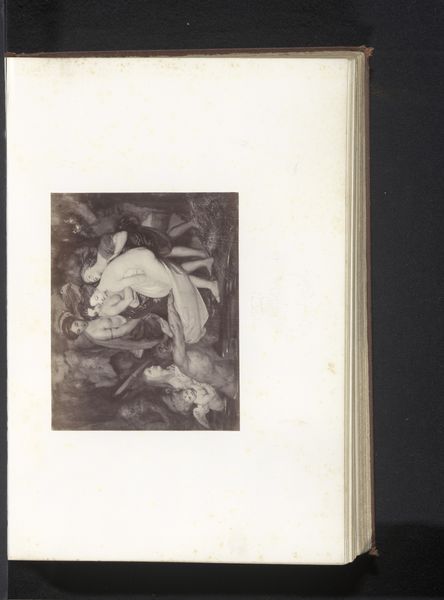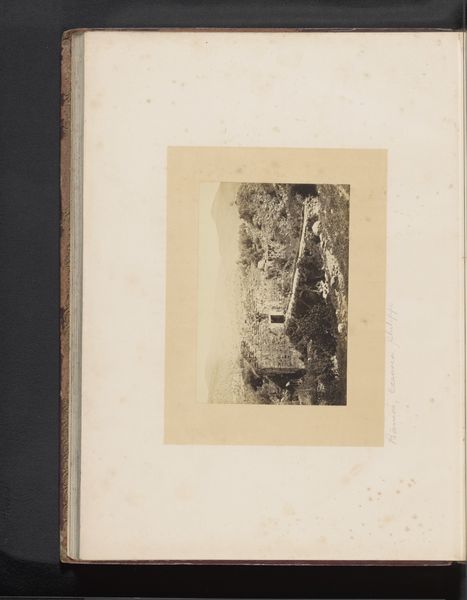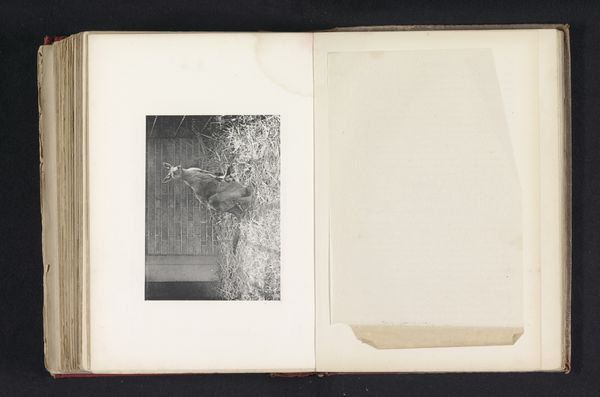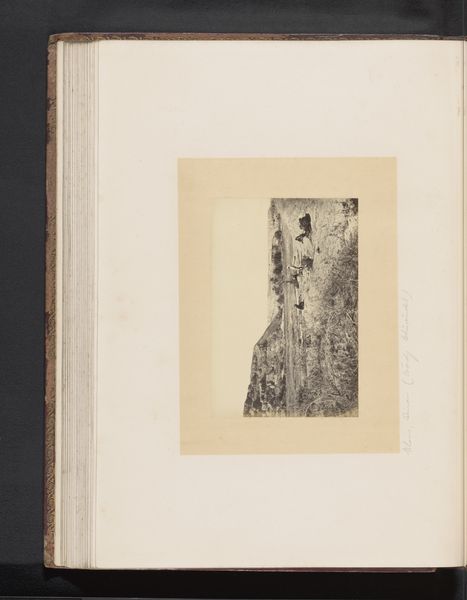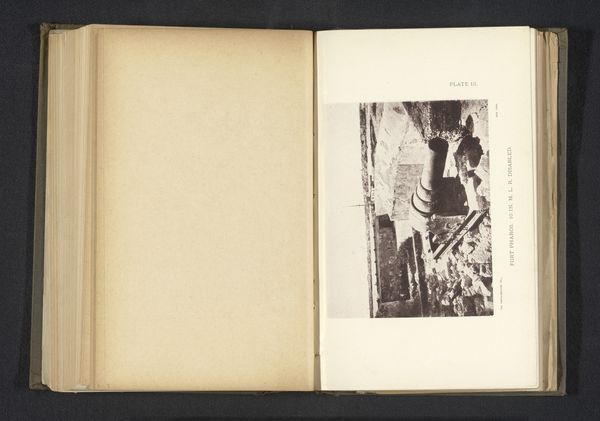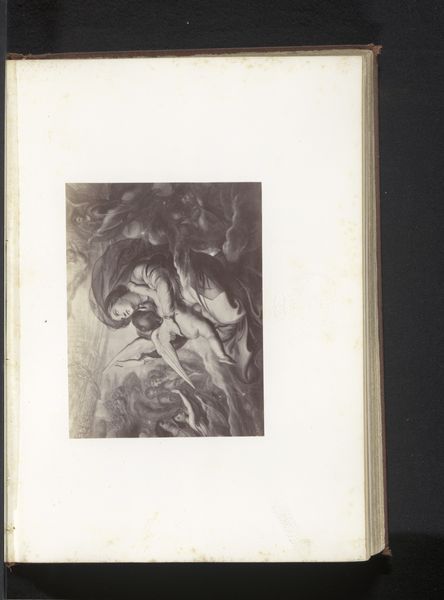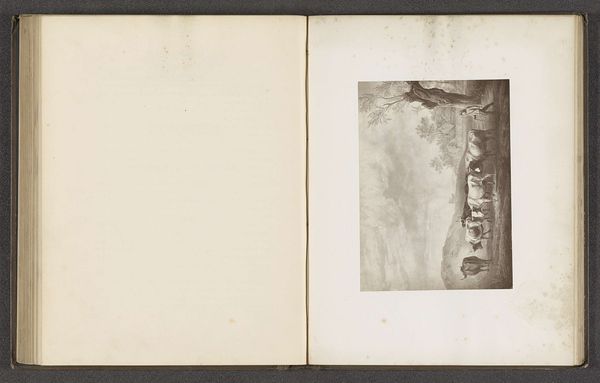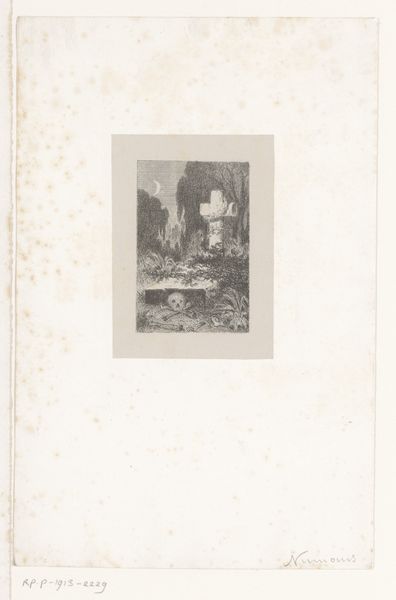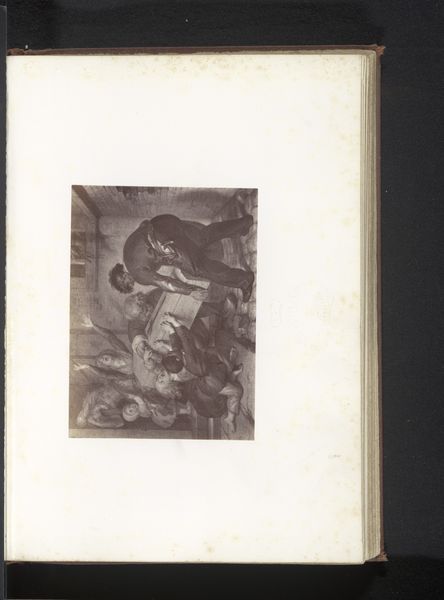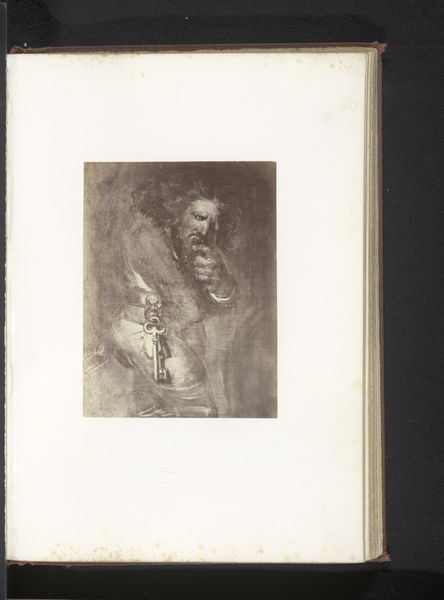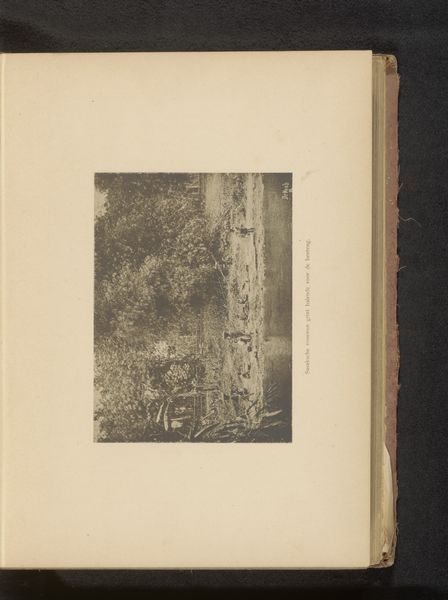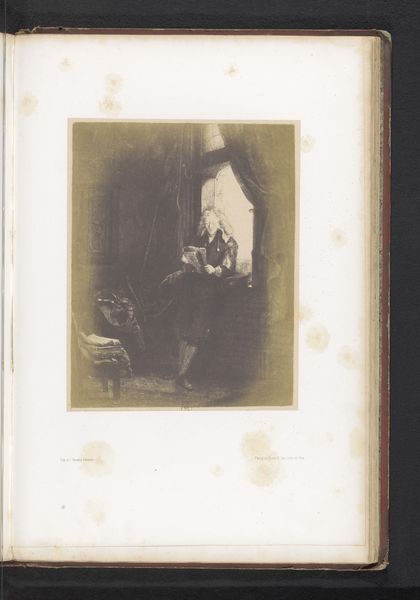
Dimensions: height 104 mm, width 155 mm
Copyright: Rijks Museum: Open Domain
Curator: This is a reproduction, specifically a gelatin-silver print of "De overhaaste begrafenis" or "The Premature Burial" by Antoine Wiertz, dating from before 1868. The print itself, created by Edmond Fierlants, captures the drama and intensity of the original painting. Editor: My initial impression is claustrophobia, immediately. The composition, with its dark tonality and tight framing, amplifies the dread inherent in the subject matter. Curator: Precisely. It’s important to note that the work delves into the anxieties prevalent during the 19th century surrounding public health and fear of being buried alive. Wiertz and, by extension, Fierlants tap into these cultural concerns through stark visual storytelling. Consider the availability of the materials used to make art at this time. Editor: Absolutely, but let’s examine the structure of the print. The sharp contrast between light and shadow heightens the psychological impact. See how the artist masterfully guides our eye to the desperate hand reaching out from the makeshift coffin, drawing us into the depicted subject's terror. Curator: Yes, and that gesture would resonate with people very much due to industrial shifts that led to labor anxiety as it affected access to materials. Did the industrial process itself alter people's fear or acceptance of the body itself? Editor: Perhaps, but notice how the roughness of the wooden planks, and the stone texture further trap that figure with material and form that has no room for him. Even more telling is how this stark wooden coffin with this frantic hand and distressed man contrasts sharply against an amorphous darkness. Wiertz wants us to consider life, and death in direct relationship to materials at hand. Curator: Right. It's as though the coarse materials and labor of burial itself conspire to bury that person alive as the production of those materials and practices affect how it occurs and its availability, accessibility, and purpose. Editor: Indeed. The print functions on symbolic and visual levels, creating an experience of palpable fear. Its success lies in this visual arrangement to make sense of our mortality, in a visual narrative of horror. Curator: I see Fierlants' work and other photomechanical reproduction, like this example, also providing insights into the evolving roles of printmaking within culture and society. Print, mass production, materiality are always in conversation with people. It is as much about labor, and mass accessibility than it is aesthetics. Editor: I concur, as this interpretation adds another rich dimension, which means we end up appreciating not just the artist's original vision but also what such piece represented culturally, historically, and now.
Comments
No comments
Be the first to comment and join the conversation on the ultimate creative platform.
